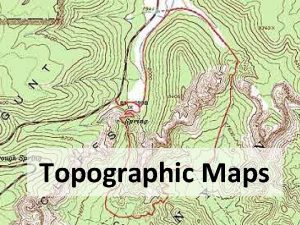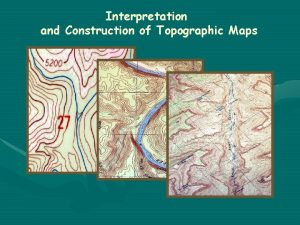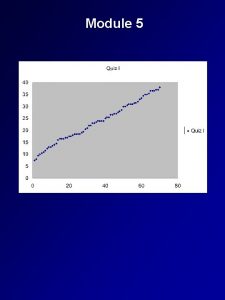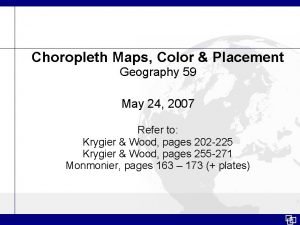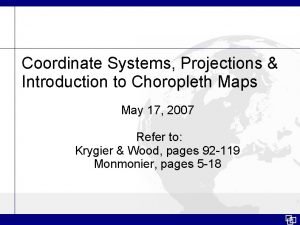Constructing and Interpreting Choropleth Maps Mark Kalwy Choropleth





- Slides: 5

Constructing and Interpreting Choropleth Maps Mark Kalwy

Choropleth Maps § A choropleth map (sometimes referred to as an area-value map) reveals patterns within data by showing the distribution of the chosen phenomenon within the selected area. For example, a choropleth map might show variations in the percent of population above 65 years by state within the United States (see below).

Interpreting Choropleth Maps § The greater the density of colour or shading, the greater the density or value represented. For example in the image below, countries with the greatest total population are shaded in the darkest tone; those with the lowest are shaded in the lightest tone. The colours/shades are represented by a key.

Constructing Choropleth Maps § 1. Determine the range of the data (Highest score minus the lowest score. ) § 2. Divide the range by the number of categories you wish to use. § 3. Assign a shade/colour to each category (keep in mind that shades/colours should be scaled from darkest to lightest, from highest values to lowest. § 4. Complete the key on the map you are using. § 5. Sort data according to categories. § 6. Follow the key to shade each area according to the data values being mapped. § 7. Title the map.

Population of Australia State/Territory Population New South Wales 7, 544, 500 Victoria 5, 866, 337 Queensland 4, 740, 900 Western Australia 2, 589, 100 South Australia 1, 688, 700 Tasmania 515, 500 Northern Territory 246, 300 NSW (highest score) = 7, 544, 500 Northern Territory (lowest score) = 246, 300 7, 544, 500 – 246, 300 = 7, 298, 200 / 4 = 1, 824, 550 Categories are: 0 – 1, 824, 550 – 3, 649, 100 – 5, 473, 650 +
